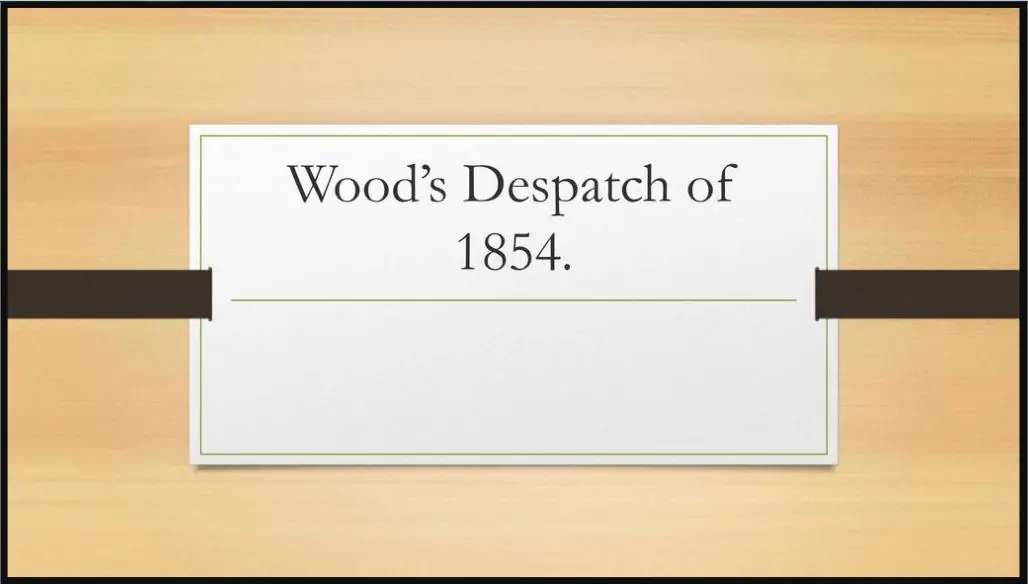Why Wood’s Despatch is called Magna Carta of Indian Education ?
Wood’s Despatch is called Magna-Carta of English Education in India because it professed the promotion of the western education in India. In accordance with Wood’s despatch, Education Departments were established in every province and universities were opened at Calcutta, Bombay and Madras in 1857 on the model of the London University.
- Later more universities were opened in Punjab in 1882 and at Allahabad 1887
Charles Wood was a British Liberal politician and Member of Parliament. He served as Chancellor of the Exchequer from 1846 to 1852. Later he became the President of the Board of Control of the East India Company. In 1854 he sent the “Wood’s despatch” to the Governor General Lord Dalhousie.
Main provisions of the Wood’s Despatch Act of 1854 are as Follows :-
- An education department was to be set in every province.
- Universities on the model of the London University be established in big cities such as Bombay, Calcutta and Madras.
- At least one government school be opened in every district.
- Affiliated private schools should be given grant in aid.
- The Indian natives should be given training in their mother tongue also.
Demerits of the Wood’s Despatch of 1854 are as follows :- (UPSC | IAS | PCS)
- The Wood’s Despatch could not manage the education system well.
- Mass education did not become a reality.
- The grant-in-aid system did not work well as there was paucity of funds and irregularity of the release of funds.
- The Despatch was more interested in promoting Western knowledge and culture.
- The Department of Public Instruction could not promote the interest of education and the education in the universities could not be related to Indian conditions.
- The Despatch did not promote vocational education as was required. in fact, the idea was postponed indefinitely.
- Women education continued to be neglected.
- The Despatch produced a class of clerks and accountants but did not develop character and leadership qualities among students




